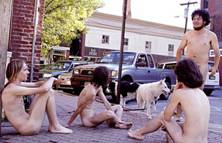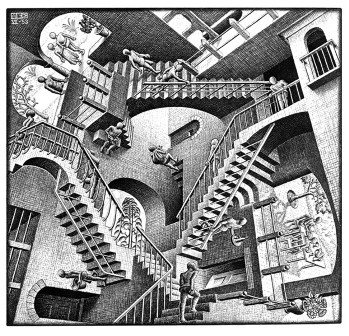|
Public policy basics
Defining public policy
As might be expected, many different definitions of public policy have been offered over the years, but Anderson’s is a good one. (Any reference to Anderson in these presentations is to the 7th edition of the text adopted for this course.) Note that he starts (6) by defining policy (which may apply generally, not just to public policy) as “a relatively stable, purposive course of action or inaction followed by an actor or set of actors in dealing with a problem or matter of concern.” He then, if only implicitly, distinguishes public policy from policy by saying (7) that “public policies are developed by governmental bodies and officials.” Note the implications that Anderson (7-9) says that follow from this definition:
- Purposive rather than random
- Relatively persistent, enduring, not one-shot
- Provoked by demands for action
- Deeds not words
- Involving decisions to act (“positive”) or not act (“negative”)
- Consequences attach to failures to comply
Public policy as steering
Given the Anderson’s definition, and implications, stop to think why we have public policies in the first place. A useful approach is to think of public policies as mechanisms to control, direct, or steer (individual and collective) behaviors in society. The argument goes as follows:
- Certain behaviors occur with certain consequences
- One or more people do not like these consequences
- Public policies are generated to change behaviors and, thus, the problematic consequences
As examples, consider the following behaviors
- Speeding
- Alcohol consumption
- High consumption of energy (given resource constraints)
- Discriminatory treatment of blacks
- Undervaluation of contemporary art
- Skateboarding (Bringing Skateboarders Doing 60 to a Halt, NY Times, 1 Apr 11)
- Telling fishy stories (Texas Passes Bill to Make Some Fish Tales a Crime, NY Times, 12 May11)
- Getting back to nature in the Harmony Lot (1; 2; 3)

- “Insider trading”
- False advertising
- Medical malpractice
Under what circumstances one can justify efforts to control, direct, or steer behavior is an important topic (public choice theory) that will be taken up in another presentation.
It takes all types
It is natural to tend to categorize policies by some sort of system. Anderson (2-3) distinguishes, for example, between policies based on the institutional venues (legislative, judicial, presidential, bureaucratic) in which policymaking activities are concentrated. Anderson also distinguishes material from symbolic policies (16-17) and policies with respect to collective v private goods (17-18) Also, there are economic policies as opposed to social or environmental ones, foreign/international as opposed to domestic ones. Sometimes these categorization schemes are useful, sometimes not. For example, promoting exports of technology to, say, China can be viewed as an economic policy but also as a matter of foreign or security policy. Indeed, some analysts are increasingly referring to intermesticity, the blending of domestic and international policy (and, thus, the blending of domestic and international politics). A number of different schemes are out there, but two are worth a little more attention
One of these, originated by Lowi (1964) and supplemented by Ripley & Franklin (1980) is covered by Anderson (11-15). In this framework, there are constituent policies (those that focus on government institutions and procedures); distributive policies in which benefits are allocated to specific winners at the expense of citizens as a whole; regulatory policies that impose limits on individuals or resources (and, here, Ripley and Franklin (1980: 23-25) distinguish between protective regulatory policies like Occupational Safety and Health Administration rules, on the one hand, and competitive regulatory policies such as those that determine which airlines have slot rights at airports); and redistributive policies in which identifiable classes of citizens win at the expense of identifiable losers (so a policy that makes urban voters better off but rural voters worse off, or one that benefits the rich at the expense of the poor). Diverting gas-generated tax revenues from highway construction to mass transit may be viewed as redistributive, while reduced rates for third class mail, arguably, provide benefits to commercial and nonprofit mass mail distributors that are subsidized by all of us who pay 44 cents to mail a birthday card or pay a bill and so are, by this scheme, distributive. Lowi’s typology does more than simply identify a means of distinguishing policies, though it turns out that there is a consensus that unambiguous typing of policies is rarely easy (Steinberger 1980). The crucial insight that Lowi offers is that different types of policy are likely to be associated with different patterns of politics. According to Lowi (1964: 689-90), “Each arena [policy type] tends to develop its own characteristic political structure, political process, elites, and group relations.” A sense of Lowi’s point can be had by looking at a table developed by Ripley and Franklin (1980: 22-23) which is posted in the public policy basics folder under Course Documents at Blackboard (note that Ripley and Franklin distinguish the four types of domestic policies from three subtypes--structural, strategic, and crisis--of foreign policy.).
Another typology is also motivated by the argument that different types of policy imply different types of politics. This typology, by James Q. Wilson (1973: 331-37), focuses on the distribution of costs and benefits of policies, distributions of which can be either concentrated or diffused. These costs and benefits are not necessarily monetary but, instead, indicate decreases or increases in individuals’ stocks of one or more different values. Putting the diffused or concentrated costs and diffuse or concentrated benefits together results in a two-by-two table:
|
Costs |
Diffuse |
Concentrated |
Benefits |
Diffuse |
|
|
Concentrated |
|
|
An example of concentrated benefits and concentrated costs is a change in labor law, say something like “card check,” a battle of considerable importance to labor unions and companies who might be faced by unionization efforts, but an issue that is of little or no interest to most people. One can expect that this card check fight will be largely confined to labor and business and their political party allies in Congress and the presidency, but that the general public is not likely to become engaged even though both union and business groups will try to mobilize sympathy. On the other hand, agricultural price supports, for which all consumers and taxpayers pay (if only in unrecognizable amounts), concentrate their benefits on farmers and associated businesses who are motivated to fight for them but, because consumers don’t feel the costs (a penny here, a penny there), little opposition arises; this example of concentrated benefits and diffuse costs is equivalent to Lowi’s “distributive policy.”
The bottom line of these efforts to develop policy typologies (that is, these efforts to classify policies in terms of important distinguishing characteristics) is that there is not one policymaking process, not a single pattern of political behaviors that are associated with every policy. Instead, policy processes are impacted, if only in part, by specific characteristics of the public policy under focus.
Stages in the policy process
There are a variety of phases in the policy process. Anderson (3-5) sketches the process out in five stages—problem identification and agenda setting; formulation; adoption; implementation; and evaluation—but other scholars have different schemes. Anderson’s works as well as any, but four additional comments might be made.
-
As should become very clear, these stages do not unfold in a nice, linear way, as Anderson (5) acknowledges); so, for example, it may occur in the formulation or adoption phase that the way the problem is conceived (part of problem identification) is altered (as, for example, where health care, which started out, as long ago as the 1940s, as a matter of justice in making sure more of the population has access to medical services, was reinterpreted by some as a means to getting control over galloping health care prices).
- When Anderson notes that the policy process is sometimes called the “policy cycle” (5) it should be noted that
Not all policies actually go through all five phases (as, for example, the Dream Act which failed to pass the adoption phase when it failed in the Senate in 2010)
The cycle idea may suggest a wheel, such that something that goes around comes back around but this is not necessarily the case; at least for some policies, i.e., the repeal of prohibition, once implemented a policy can stay essentially in place for a long, long time
- One should not casually associate particular institutions with particular phases—the president and the courts may be deeply involved in policy formulation, and Congress may exercise influence in the implementation phase.
- Without using the language, Anderson (6) recognizes that the policymaking process is typically characterized by synergy, which is to say that the process is made up of many interacting participants, each pursuing their own goals and following their own ways of operating, and that participants are constrained by the actions of others at the same time they try to anticipate and constrain the choices of other players. An important consequence of synergistic processes is that outcomes or results are often quite different from what individual participants expect or desire to see. (For those interested in synergy as a common phenomenon, Corning (1998) has a useful essay.)
|


